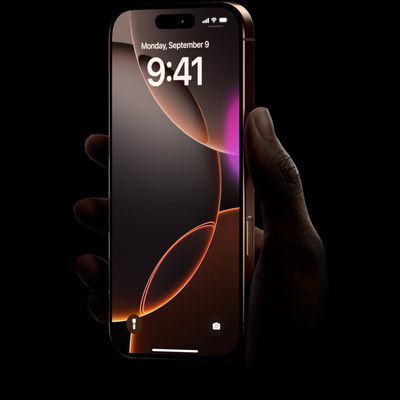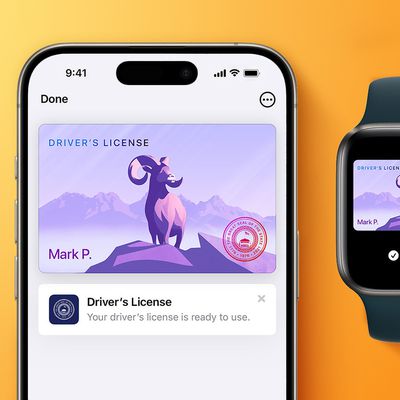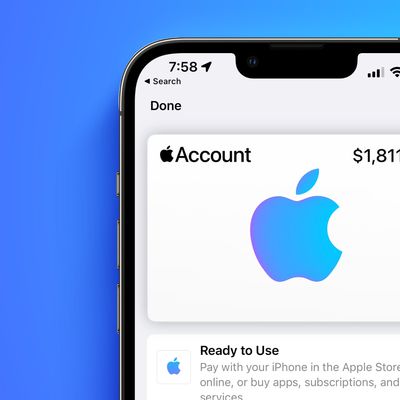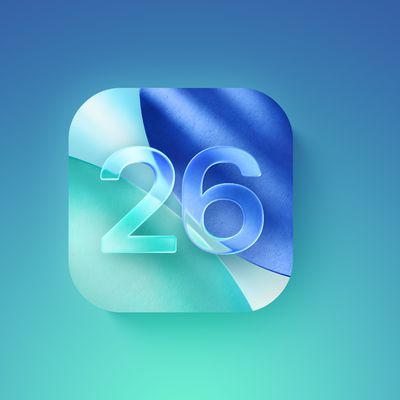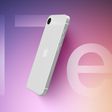With pre-orders for the iPhone 14 lineup now open, many iPhone customers will be weighing up whether or not now is the time to upgrade their device.
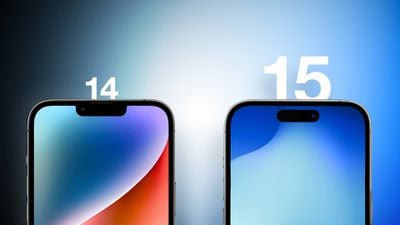
The iPhone 14 models offer some substantial upgrades with Emergency SOS via satellite, Crash Detection, camera improvements, and more, but some customers will now be casting their mind forward to next year, when it may be a more appropriate time to upgrade for them. It is still early days for iPhone 15 rumors and everyone's individual circumstances for the best time to upgrade will be different, but what to expect from next year's new iPhones will be important to many of those who are choosing to not upgrade to an iPhone 14 model.
In 2023, it will be 10 years since the launch of the popular iPhone 5s, and five years since Apple revealed the first large full-screen iPhone design with the iPhone XS Max. 2023's presumably-titled "iPhone 15" lineup is currently rumored to feature:
- USB-C port
- "Pill" display cutout in place of the notch on the iPhone 15 and iPhone 15 Plus
- Under-display Touch ID fingerprint scanner
- A17 chip, manufactured using a 3nm fabrication process
- Periscopic telephoto camera, likely exclusive to the iPhone 15 Pro Max
USB-C Instead of Lightning
Apple analyst Ming-Chi Kuo believes that at least some iPhone 15 models, set to launch in the second half of 2023, will feature a USB-C port instead of Lightning to improve data transfer and charging speeds. Bloomberg's Mark Gurman went on to corroborate Kuo's claim, saying that Apple is testing iPhones with USB-C ports instead of Lightning. Gurman added that if Apple switches the iPhone from Lightning to USB-C, it will release a Lightning to USB-C adapter to allow USB-C iPhones to connect to Lightning-based accessories and cables.
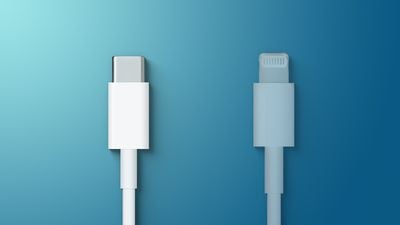
Initial speculation suggested that Apple will retain the Lightning port on the iPhone until it no longer requires any ports at all, relying singularly on MagSafe instead. MagSafe was first introduced on the iPhone with the iPhone 12 in 2020, and it remains a relatively new technology on the iPhone with no data transfer capabilities. Now, Apple has seemingly changed its plans.
One possible reason for the change is regulatory pressure to standardize ports in countries like India and Brazil. The EU is once again moving forward with legislation to force Apple to adopt USB-C on all iPhones, iPads, and AirPods sold in Europe by the fall of 2024.
Apple has used the Lightning connector on all iPhones since 2012's iPhone 5, as well as a wide range of iPads and accessories. Most other devices, including many of Apple's own iPads and Macs, have switched to USB-C as a versatile and highly capable connector, in a small, reversible form factor. Calls for Apple to switch to USB-C on the iPhone have grown in recent years, citing the benefits of faster data transfer speeds, especially for large ProRes video files, and consistency between devices.
It is not clear which iPhone 15 models will feature a USB-C port, but it seems plausible that Apple could reserve the feature for the "Pro" models. USB-C was exclusive to the iPad Pro for several years before it expanded to the iPad Air and iPad mini, so a similar pattern for the iPhone is a possibility. If so, after 10 years of the Lightning connector dominating the best available iPhone, this year's iPhone 14 Pro could be the final flagship iPhone with a Lightning port.
Kuo went on to claim that accessories like AirPods, the MagSafe Battery Pack, and the Magic Keyboard, Mouse, and Trackpad trio will also switch to USB-C in the "foreseeable future."
Dynamic Island: No More Notch on iPhone 15 and iPhone 15 Plus
Display expert Ross Young, who often reveals accurate insights into Apple's plans, was the first analyst to reveal that the iPhone 14 Pro would feature "pill-shaped" and circular cutouts following component leaks. It then emerged that the iPhone 14 Pro's cutouts would appear as a single, unified "pill" thanks to software, in a feature we now know to be called "Dynamic Island."
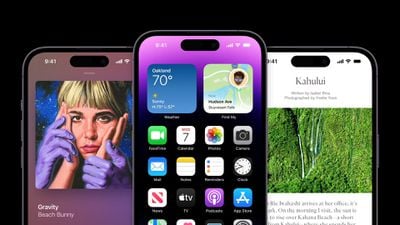 The iPhone 14 Pro's Dynamic Island.
The iPhone 14 Pro's Dynamic Island.The Dynamic Island is not a static cutout, and can shift in size and shape to blend itself into the UI and provide new visual tools front and center on the iPhone's display. In standard usage, it is a small pill-shaped cutout, but Apple uses pixels to expand it to match different tasks such as Apple Pay payments and Face ID authentication.
Young believes that this design will trickle down to the iPhone 15 and iPhone 15 Plus next year, unifying the entire iPhone 15 lineup under one front-facing design. This could offer a substantial upgrade for users of the standard iPhone 15 models, with the Dynamic Island being among the most eye-catching and popular iPhone 14 Pro features.
Under-Display Touch ID
Apple reportedly tested under-screen fingerprint scanner technology for at least some iPhone 13 models, according to The Wall Street Journal's Joanna Stern and Bloomberg's Mark Gurman, but Apple apparently decided not to move forward with the idea at that time.
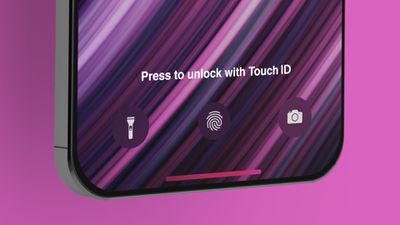
In a September 2021 research note, Kuo forecasted that Apple will launch at least one new iPhone model with an under-screen fingerprint scanner in the second half of 2023, which would line up with the launch of the iPhone 15 models, but he has not shared any further information about the feature since then.
3nm A17 Chip, But No Custom 5G Modem
Apple has committed to order chips fabricated using TSMC's 3nm process, which will reportedly be used for the iPhone 15 lineup's A17 chip. The 3nm process yields 30 percent better power consumption and 15 percent better performance over the 5nm process behind the A14 and A15, indicating notable advancements.
![]()
It is not clear if the A17 will be available in all of the iPhone 15 models, but Apple could continue the trend started with the A15 chip in the iPhone 14 and iPhone 14 Plus, and use the 4nm A16 Bionic down for these devices instead.
Taking cues from its work on Apple silicon, Apple was rumored to be working on a custom 5G modem to debut in all of the iPhone 15 models in 2023 for over a year. With the aim of moving away from Qualcomm, Apple is believed to have kickstarted the work by acquiring Intel's modem chip business in 2019. TSMC, the Taiwanese company that currently supplies all of Apple's custom silicon SoCs, was also reported to be preparing to supply Apple with its custom-designed 5G baseband modem.
Kuo said that Apple's efforts "may have failed," with development on the chip reportedly stalling behind the scenes. This means it now looks like Qualcomm will remain the exclusive supplier for all of the 5G chips for the 2023 iPhone models, rather than just 20 percent as previously thought.
It is not clear why Apple will no longer have its modem ready in time for 2023's iPhone lineup, but the company has been aiming to move away from Qualcomm for several years. Apple had a protracted legal battle with Qualcomm and planned to use Intel 5G chips in the 2020 iPhones, but that was not ultimately possible because Intel was not able to manufacture 5G chips that met Apple's standards. Apple ended up settling its lawsuit with Qualcomm in 2019 and has used Qualcomm 5G modems in the iPhone and iPad lineups since then.
Kuo expects Apple to continue developing its own 5G chip, but it will likely take more time for the work to be completed to a satisfactory standard for use in iPhones and other devices in the future.
Periscope Camera on iPhone 15 Pro Max
In 2023, the iPhone is expected to adopt a "periscopic telephoto lens" for the first time after years of rumors about the feature.
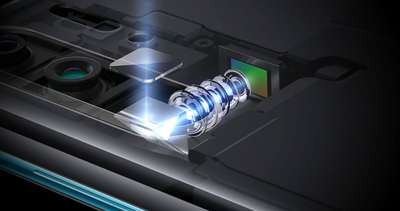 The periscope camera system of the Huawei P30 Pro.
The periscope camera system of the Huawei P30 Pro.Apple has allegedly run into trouble developing its own periscope camera system because much of the technology is guarded by other patents, though it has still filed periscope camera patents of its own, and is reportedly exploring purchasing the components from existing patent holders instead. Samsung, for example, owns the "ball-type actuator" technology used in many periscope lenses.
The iPhone 15 Pro Max will be the sole Apple smartphone of 2023 to get a periscope camera lens and benefit from greatly enhanced optical zoom, according to analyst Ming-Chi Kuo, with the 6.1-inch iPhone 15 Pro model retaining the current telephoto lens for optical zoom.
In a periscope system, light entering the telephoto lens is reflected by an angled mirror towards the camera's image sensor. The change in direction in which the light travels allows for a longer "folded" telephoto setup inside phones, enabling users to zoom in further without any blurriness. Largan and Genius are expected to be Apple's main suppliers of such a lens in 2023.
There are already some Android smartphones with periscope lenses. Samsung's Galaxy S22 Ultra for instance features up to 10x optical zoom and 100x digital zoom. With the addition of a periscope lens, the iPhone 15 Pro Max would follow suit. Kuo says the 1/3-inch sensor will have 12-megapixel resolution with an f/2.8 aperture, up to 6x optical zoom, and sensor-shift stabilization. For context, iPhone 14 Pro models are limited to 3x optical zoom.
Final Thoughts
It is essential to take rumors surrounding future iPhones with a pinch of salt and there is still plenty of time for Apple's plans to change. Nonetheless, given the track record of many of the analysts and leakers from whom these rumors are derived, it is highly likely that there is some truth to them.
USB-C is likely to be one of the most meaningful upgrades for most users, but the periscope camera, potential under-display Touch ID, more advanced technology to deliver the A17 chip, and even the Dynamic Island expanding to the entire lineup could make for a fairly significant overall upgrade regardless of which device customers opt for. Kuo believes that the iPhone 15 models could have more feature differentiation between each of the devices, so customers could face more of a dilemma about which one to buy to get the features they want.
For now, eyes are set on the iPhone 14 and iPhone 14 Pro, which will start arriving to customers on Friday, September 16.


